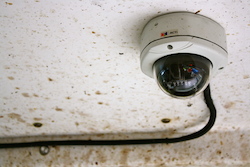Maine fishermen are wrapping up year two of a pilot project to test electronic monitoring systems, the Portland-based Gulf of Maine Research Institute reports. The pilot project aims to develop an accurate, more cost-effective and safer alternative to using human observers at sea.
"We need to get better information on catch and discards into the management process if we are going to rebuild our groundfish populations and sustain our fishing businesses," says Ben Martens, executive director of the Maine Coast Fishermen's Association, one of the pilot project partners. "It's clear to me these electronic monitoring systems can help make that happen."
The Maine group is part of a collaborative research team led by GMRI, The Nature Conservancy, and Ecotrust Canada. Project participants are testing a new suite of electronic equipment that could replace human observers.
It's expensive using human observers — roughly $500 to $800 a day, GMRI says. NMFS currently covers the cost of processing the data collected at sea and associated administrative expenses. But proposed regulations would limit NMFS funding for the at-sea costs, which would likely be transferred to fishermen come this fall, GMRI says, unless a recent budget amendment the Senate passed provides at-sea monitoring funds.
In the project's second year, seven participating fishermen collected data on over 150 days. GMRI and Ecotrust Canada technicians have equipped participating boats with an electronic monitoring control box that uses open source software for data collection, as well as digital cameras, GPS, hydraulic pressure sensors and powerful removable hard drives that store the data collected for later analysis.
According to GMRI, preliminary results indicate a strong correlation between the numbers and species of fish being discarded that are recorded in captains' logbooks and what the video footage captures. In the new 2015 fishing year, additional analysis will be conducted to identify ways of improving accuracy and precision.
The goal is to design a project this year that will support implementation of an electronic monitoring program in 2016 — a year earlier than the May 2017 date NMFS originally announced in 2014, says Jessica Gribbon Joyce, GMRI's program manager.
So far, the project is showing promise. "Using the electronic monitoring system really didn't add too much extra work to our fishing day, and I think it is something that fishermen will get behind if it can give us a safer alternative to taking human observers on our boats," says Troy Bichrest, a project participant who fishes out of Cundy's Harbor.
It's good to hear progress is being made on the monitoring project; I remember fishermen's shock and anger at the January 2013 New England Fishery Management Council meeting when drastic cod and yellowtail flounder cuts were announced along with the news that fishermen would now be responsible for bearing half the monitoring costs, too, because the agency's budget no longer had funds to assume the full total.
Fortunately, NMFS did ultimately continue paying the monitoring costs, but fishermen knew they would eventually have to bear them. If all continues to go well with the pilot program this year, then perhaps by 2016 an electronic monitoring program that is accurate and less expensive will ease that burden.
You can click here to read the final report from the second year of the project, which provides more detailed results and improvements being made for the 2015 fishing year.







